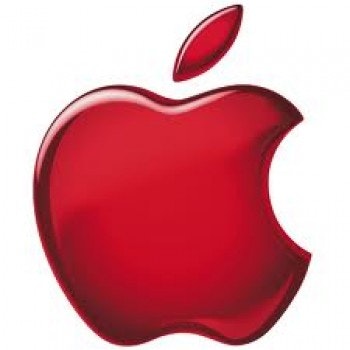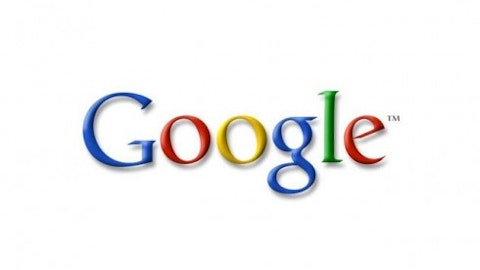Apple Inc. (NASDAQ:AAPL) set another 52-week low yesterday, hitting $419. The company’s journey from a 52-week intraday high of $705 to today’s low only took about six months. The market has been ruthless: Whenever a bottom seemed in sight, shares just kept sliding. To add perspective, the Dow Jones Industrial Average actually rose almost 4% during the same period. This leaves investors with two pressing questions: What is driving Apple’s decline, and how much lower could the company go?
A hardware-dependent business model
In an unusual turn of events, Apple Inc. (AAPL)’s close rival, Google Inc (NASDAQ:GOOG), has risen about 19% during the last six months, in stark contrast to Apple Inc. (AAPL)’s 40% decline. In fact, yesterday Google set another all-time high, at $820. Google’s favor with Wall Street provides insights for understanding Apple Inc. (AAPL)’s decline.
Unlike Google, Apple Inc. (AAPL)’s revenue relies heavily on unpredictable blockbuster products. Yes, Apple Inc. (AAPL) has iTunes, software, and services as well — all more consistent and predictable forms of revenue. But most of its revenue comes from iPhones, iPads, or Macs. Together, these three segments make up 86% of Apple Inc. (AAPL)’s revenue; iPhone sales alone make up 56%.
As the world’s leader in online search, Google attracts investors who are betting heavily on continued growth in revenue from advertising on its own sites, and from Google’s partner sites, as news, media, and shopping continue to bring more business online. This revenue stream is much more predictable and reliable than Apple’s product sales — hence Google’s consistently higher P/E ratio.
But Apple Inc. (AAPL) leaves investors worried about the future. They wonder: Could Apple Inc. (AAPL) end up losing favor with consumers over the next five years? If it does, Apple Inc. (AAPL) could lose significant momentum, or even experience year-over-year declines in sales in major product categories.
Some experts have suggested that Apple Inc. (AAPL) is already losing ground with consumers. The creative director behind Apple Inc. (AAPL)’s successful “Think Different” campaign, Ken Segall, notes that Samsung is making “remarkable inroads in a very short time.” He explains that Samsung spends far more money on advertising that goes against Apple’s product-based approach, with a people-based approach that plays off “growing negative perceptions about Apple.”
Given Apple’s dependence on blockbuster product launches, a negative perception is a definite threat to Apple Inc. (AAPL)’s cash flow. Meanwhile, investors are confident that Google will remain a substantial player in the worldwide online search market for years to come.
Apple’s missing premium
In short, three factors ultimately determine a stock’s premium:
1. Growth prospects
2. Risk
3. Profitability
In all three of these areas, Apple is facing significant headwinds.
Apple Inc. (AAPL)’s growth prospects are uncertain. In the fourth quarter of 2012, Samsung sold 62 million smartphones, compared to Apple Inc. (AAPL)’s 47.8 million iPhones, and surpassed Apple Inc. (AAPL) for the first time. Furthermore, Apple Inc. (AAPL)’s growth has slowed significantly. Revenue in the first quarter increased just 18% from the year-ago quarter. Year-over-year revenue in the first quarter of 2012, on the other hand, grew 73%.
Even Apple’s renowned leadership in tablets is slipping. According to a Feb. 7 research report from Canalys, Apple Inc. (AAPL)’s worldwide tablet market share dipped below 50% for the first time. Google, Samsung, and Amazon.com, Inc. (NASDAQ:AMZN) are seeing success at lower price points. Chitika, for instance, reports of a 5% decline in iPad web traffic during the last three months due to the success of Amazon’s Kindle Fire and Samsung’s Galaxy tablets.
Amazon’s Kindle Fire came in second to the iPad with a considerable 7.7% of web traffic share. Though Kindle unit sales are unknown due to Amazon’s silence on the matter, the company stated that “at year-end, Kindle Fire HD, Kindle Fire, Kindle Paperwhite and Kindle held the top four spots on the Amazon worldwide best seller charts since launch.”
With 56% of Apple Inc. (AAPL)’s revenue coming from one product, the risks associated with Apple Inc. (AAPL)’s business model are high. Though Apple does have a nearly flawless history of successful product launches over the last 10 years, it’s still risky to assume the same will be true for the next five years — especially as competition heats up.
As far as profitability, Apple Inc. (AAPL)’s declining gross margin, from 44.7% in the year-ago quarter to 38.6% today, has investors worried that competition is beginning to put pricing pressure on Apple’s products.
The result is Apple’s current P/E of just 9.5.
A positive twist
Though Apple Inc. (AAPL) is definitely facing some headwinds, a positive twist on the same three factors reveals quite a different picture.
For instance, Apple Inc. (AAPL) may be losing market share to Samsung, but the smartphone and tablet market as a whole is still growing rapidly. A report from ABI research predicts an annual industry growth rate in smartphones and tablets of 44% and 125%, respectively.
And yes, Apple Inc. (AAPL)’s gross margins may be declining, but the company’s pricing power is still the envy of the industry. In 2012, Apple Inc. (AAPL) managed to convert $0.28 of every dollar of sales into free cash flow.
An irrational valuation
A reverse discounted cash flow valuation, using an 11% discount rate, reveals that the market assumes a 3.3% growth rate in Apple Inc. (AAPL)’s free cash flow at today’s price. This means that investors expect Apple to only keep up with the historical rate of inflation going forward.
The negative factors surrounding Apple Inc. (AAPL) undoubtedly have an outsized influence on today’s market price. Even if Apple’s sales were flat in 2013, it could significantly boost EPS by buying back shares more aggressively with some of its massive cash hoard of more than $100 billion. In fact, yesterday Warren Buffett publicly encouraged Apple to do exactly this.
Headwinds are priced into Apple’s stock. But the rapidly growing smartphone and tablet market is not. Though it’s hard to estimate exactly where the bottom is for Apple Inc. (AAPL)’s shares, there is no doubt we are getting close. The market will always have shortsighted and unpredictable doubts, but the patient investor can take advantage of this significant sell-off to load up on more Apple Inc. (AAPL) shares.
As Buffett says, “Be fearful when others are greedy, and greedy when others are fearful.”
The article How Much Lower Could Apple Go? originally appeared on Fool.com and is written by Daniel Sparks.
Fool contributor Daniel Sparks has no position in any stocks mentioned. The Motley Fool recommends Amazon.com, Apple, and Google. The Motley Fool owns shares of Amazon.com, Apple, and Google.
Copyright © 1995 – 2013 The Motley Fool, LLC. All rights reserved. The Motley Fool has a disclosure policy.





